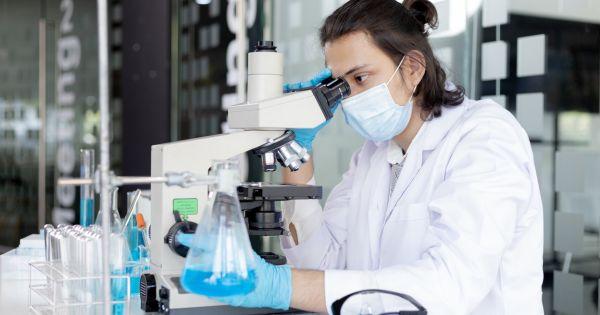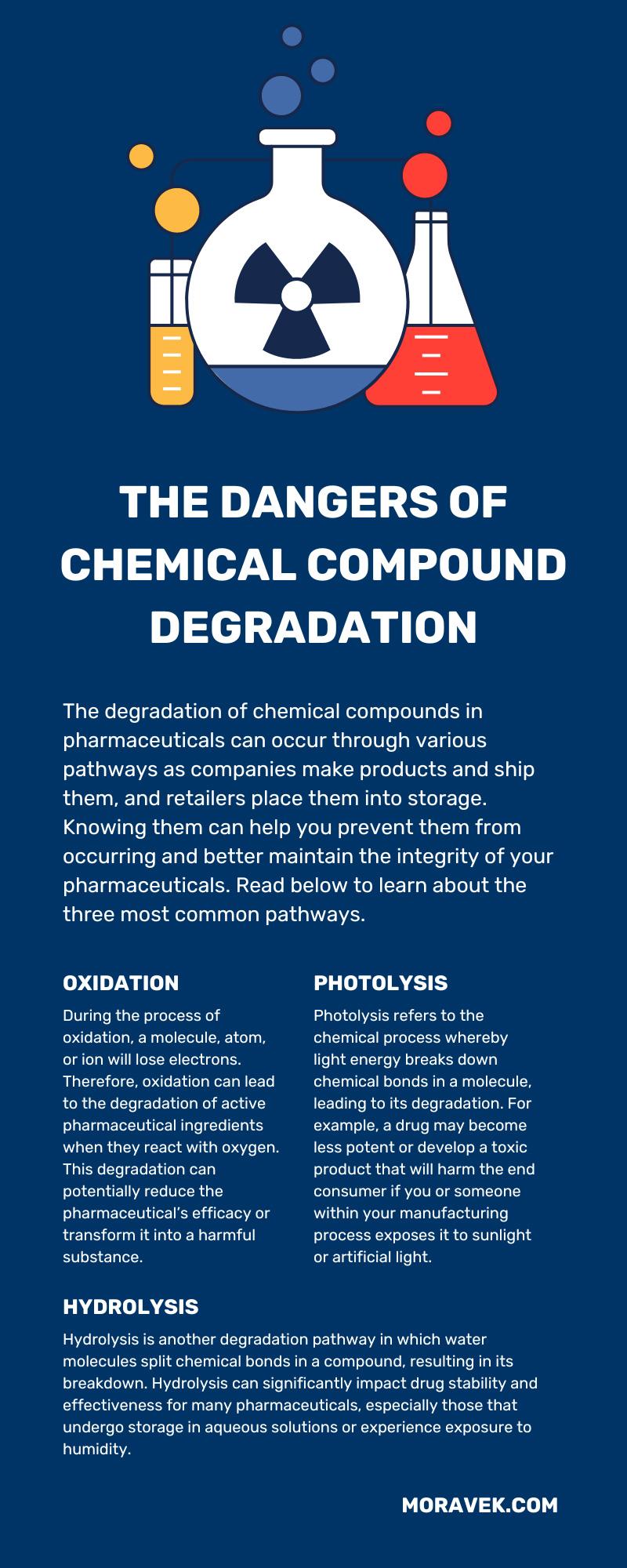
Patients taking prescriptions expect their medications to be safe for consumption and provide them with an effective dosage that will allow them to get better. However, chemical compound degradation can get in the way of these goals and have a devastating impact on your business. Read on to learn about the dangers of chemical compound degradation and how you can ensure the highest standards of drug safety and effectiveness.
What Is Chemical Compound Degradation?
Chemical compound degradation refers to the process through which chemical substances break down into smaller components due to various factors. Understanding the mechanisms and conditions that lead to chemical degradation is crucial for the pharmaceutical industry.
How Does It Affect Pharmaceuticals?
Pharmaceutical companies must be aware of the dangers of chemical compound degradation so they can continue providing safe, high-quality products to consumers. The drug degradation process can result in the formation of unintended products that can have an adverse effect.
For example, these new products can significantly reduce the medication’s effectiveness. Additionally, degradation products can be toxic or produce unwanted side effects in some cases, posing serious health risks to patients. Therefore, healthcare providers must manage patient treatment effectively to overcome this substantial challenge.
Ultimately, degradation may also have massive financial implications for drug manufacturers. The manufacturers may have to undergo recalls and lawsuits when drug degradation occurs. These instances may also result in your consumers losing confidence in you, which can lead to drops in your sales and blows to your company’s image. You may find it difficult to regain their trust after such an incident.
Furthermore, the cost and effort required to reformulate drugs, redesign packaging, and implement enhanced quality control measures can be considerable. Thus, preventing chemical compound degradation is not only a matter of patient safety but also a critical financial concern for the pharmaceutical industry.
How Does Chemical Compound Degradation Occur?
The degradation of chemical compounds in pharmaceuticals can occur through various pathways as companies make products and ship them, and retailers place them into storage. Knowing them can help you prevent them from occurring and better maintain the integrity of your pharmaceuticals. Read below to learn about the three most common pathways.
Oxidation
During the process of oxidation, a molecule, atom, or ion will lose electrons. Therefore, oxidation can lead to the degradation of active pharmaceutical ingredients when they react with oxygen. This degradation can potentially reduce the pharmaceutical’s efficacy or transform it into a harmful substance. Manufacturers often add antioxidants to drug formulations to prevent oxidation, thereby maintaining the medication’s stability and safety.
Photolysis
Photolysis refers to the chemical process whereby light energy breaks down chemical bonds in a molecule, leading to its degradation. For example, a drug may become less potent or develop a toxic product that will harm the end consumer if you or someone within your manufacturing process exposes it to sunlight or artificial light.
Hydrolysis
Hydrolysis is another degradation pathway in which water molecules split chemical bonds in a compound, resulting in its breakdown. Hydrolysis can significantly impact drug stability and effectiveness for many pharmaceuticals, especially those that undergo storage in aqueous solutions or experience exposure to humidity.
How Can I Prevent Drug Degradation?
As we have seen, the effects of drug degradation can pose significant threats to your product’s safety and your business’s integrity and reputation. Fortunately, you can use multiple strategies to mitigate the risk of drug degradation and better ensure the quality of your products.
Use Special Packaging
Adopting special packaging materials and designs is one strategy for combating the effects of degradation. For example, using opaque packaging can protect sensitive drugs from harmful light exposure, thus preventing photolytic degradation.
Additionally, packaging that includes desiccants can help control humidity levels, reducing the risk of hydrolysis. Packaging with effective seals also minimizes the drug’s exposure to oxygen, guarding against oxidation. Innovations in packaging technology continue to provide new solutions to enhance drug stability.
However, it is also critical that you do not pick any packaging that will do harm to the drug or cause it to lose its effectiveness—making the process of choosing the right packaging very important.
Follow Shipping Regulations
Adherence to stringent shipping regulations can significantly reduce the risk of chemical degradation during the transportation of pharmaceuticals. These regulations often specify the use of temperature-controlled transport conditions to prevent drugs from experiencing exposure to extreme temperatures that can trigger or accelerate degradation processes. Ensuring that people follow these guidelines diligently requires cooperation between manufacturers, logistics providers, and regulatory authorities to maintain the pharmaceuticals’ integrity from production to delivery.
Change Your Compound
Altering the chemical compound of the drug itself is another pivotal strategy for countering drug degradation. However, using this strategy will require you to have extensive knowledge of the drug’s molecular structure and how it interacts with degradation pathways such as oxidation, hydrolysis, and photolysis.
Pharmaceutical researchers can enhance the drug’s resistance to degradation by modifying certain chemical groups or adding stabilizing agents to the compound, thereby extending its shelf life while maintaining its efficacy and safety. This method, while complex, represents a proactive approach to pharmaceutical design that prioritizes long-term stability and effectiveness.
Obtain Analytical Services
Investing in analytical laboratory services is another effective means of preventing drug degradation. With the help of these services, you can learn about the purity of your chemical compounds, so that you can identify potential degradation pathways and more accurately determine the shelf-life of your products.
This information is crucial for designing degradation-resistant drugs, choosing appropriate packaging, and establishing optimal storage conditions. Furthermore, ongoing analytical monitoring can help detect and address stability issues before they have unfortunate impacts.
In essence, the prevention and understanding of chemical compound degradation is of paramount importance in the pharmaceutical industry, serving as a foundation for ensuring drug safety and efficacy. Moravek can help you ensure the safety of your drugs through our services, which include the production and analysis of labeled and non-labeled compounds. We are ready to help you develop products that will make your patients feel better and not adversely affect their health.

